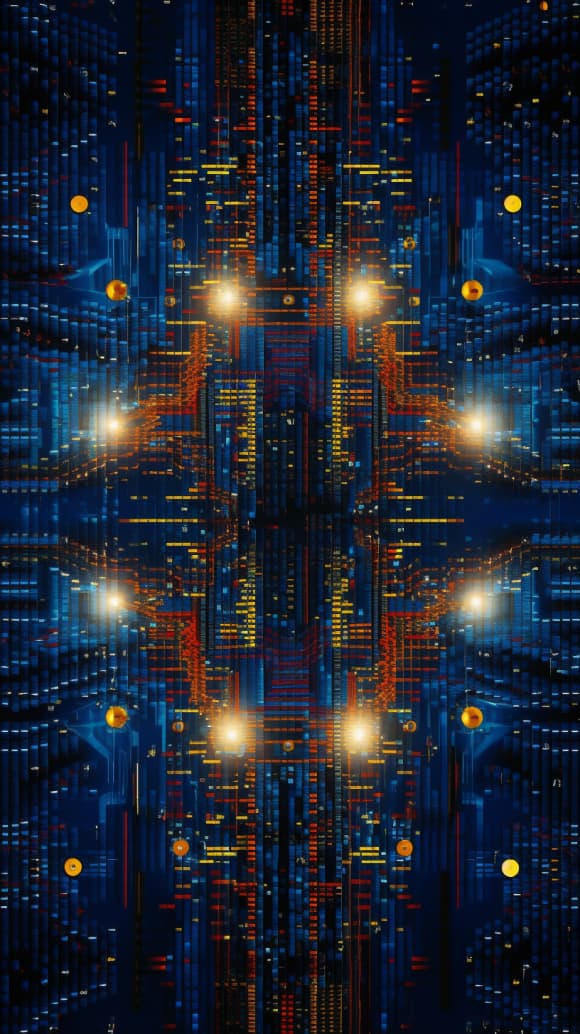Last week, the European Union made significant strides in the technology sector, with the European Parliament voting to approve draft rules for the AI Act and EU lawmakers initiating a new antitrust lawsuit against Google. This seminal moment in tech policy, which witnesses the dawn of global AI regulations, requires an incisive look to understand the implications and future trends.
EU's Risk-based Approach to AI Regulation
The AI Act, which passed with an overwhelming majority, is built on a 'risk-based approach' to AI regulation. Just like the EU’s Digital Services Act, which provides a legal framework for online platforms, this AI Act sets forth restrictions based on the perceived dangers of AI applications. Businesses must present risk assessments pertaining to their use of AI. AI applications seen as posing an “unacceptable” risk may be prohibited, while those classified as “high risk” will have added restrictions and transparency requirements.
Major Implications of the Draft AI Act
- Ban on Emotion-Recognition AI: The draft proposes a ban on AI that attempts to recognize human emotions in schools, workplaces, and policing contexts. Notwithstanding the pushback from other institutions, this move sets the stage for a contentious political battle, considering the criticism AI-based facial detection and analysis have received for their inaccuracy and bias.
- Ban on Real-Time Biometrics and Predictive Policing: The ban on real-time biometrics and predictive policing in public spaces marks another potential legislative battleground, with various EU bodies tasked with enforcing it. As policing groups argue for the necessity of such technologies, countries like France plan to expand their use, complicating the negotiation landscape.
- Ban on Social Scoring: The legislation outlaws social scoring by public agencies, a practice associated with authoritarian governments. Despite its prevalence in areas such as mortgage approval, insurance rate setting, hiring, and advertising, the ban underscores the complexity of integrating AI in societal judgments.
- New Restrictions on Generative AI: The proposal seeks to regulate generative AI, banning the use of copyrighted material in training sets of large language models like OpenAI's GPT-4. It also requires labelling AI-generated content, opening a new avenue for data privacy and copyright discussions.
- Additional Limitations for Social Media Recommendation Algorithms: The draft designates social media recommendation systems as “high risk”, escalating scrutiny around their operation and potential impact on user-generated content. This could leave tech companies more liable for any adverse effects.
Anticipating the Future of AI Regulation
Margrethe Vestager, executive vice president of the EU Commission, views the risks associated with AI as widespread, touching upon trust in information, vulnerability to social manipulation, and mass surveillance. The EU's deliberations over AI regulation underscore the necessity of critically examining the roles of AI in society to avert potential threats to societal stability.
Additional Developments in Tech Policy
Beyond AI regulation, other global events also merit attention. In Ukraine, for instance, the surrender of a Russian soldier to a Ukrainian assault drone signals the transformation of warfare. Meanwhile, Redditors protest changes to the site’s API that could limit third-party apps' functionality. Such developments further highlight the pervasive role of technology in our everyday lives, necessitating constant vigilance and thoughtful policymaking.
Questioning the Restrictions on Generative AI
The proposed restrictions on generative AI as part of the European Union's AI Act draft—specifically the ban on using copyrighted material in training sets for large language models—merits criticism. While the intention of protecting intellectual property rights and maintaining data privacy is commendable, the application of this regulation may be flawed, and it potentially overlooks certain realities of machine learning operations.
In the case of AI models like OpenAI's GPT-4, data from a variety of sources, including those in the public domain, is essential for training. These AI models do not retain specific excerpts from the input data but instead, learn patterns and structures to generate new content. The use of copyrighted material in this context is not for direct reproduction, but to facilitate a broader understanding of human language and its nuances, and thus, should not be conflated with copyright infringement.
Several courts have acknowledged this nuance, ruling that publicly available data can indeed be used for machine learning. These legal precedents highlight that the act of training an AI model on various data sources does not constitute a copyright violation, given that the output is original and not a replication of the input data. This critical distinction is crucial for the advancement of AI technologies, and the draft regulation seems to overlook this aspect.
Moreover, the proposed requirement to label AI-generated content opens up another area of contention. While transparency is a cornerstone of ethical AI use, this stipulation could potentially stifle the creative uses of AI, and create unnecessary fear or bias against AI-generated content. There should be a more nuanced discussion around this, considering the context and potential consequences of the AI-generated content, rather than implementing a blanket rule.
The proposed regulations on generative AI, though well-intentioned, risk hampering the growth and development of AI technologies. A more balanced approach, considering both the need for data protection and the nature of machine learning, is required for effective and fair AI governance. Regulations should strive to protect rights without stifling innovation, maintaining a delicate balance between the advancement of AI technologies and the protection of individual privacy and intellectual property.
The Familiarity of Challenges in the AI Landscape
The perceived challenges and implications associated with the burgeoning field of artificial intelligence may seem novel or exclusive to this era of rapid technological advancement. However, a closer examination reveals that many of these issues are not unprecedented but are iterations of age-old problems that have existed well before the advent of AI.
Bias and Discrimination: The issue of bias in AI systems, such as discriminatory facial recognition software or unfair algorithms, reflects a problem that has been present in societies long before AI came into the picture. Historical systemic biases and discrimination based on race, gender, age, or socioeconomic status have unfortunately been encoded into AI systems, essentially mirroring the biases in the datasets they were trained on. This is not a new issue but a recurring societal challenge manifested in a different medium.
Privacy Concerns: Concerns about privacy and data protection are also not unique to AI. As far back as the advent of record-keeping, individuals have grappled with the tension between maintaining personal privacy and providing necessary information for various services or benefits. With the advent of the internet, these concerns only grew more prominent as the scope of information sharing expanded. AI has magnified these concerns due to its capacity for extensive data collection and processing, but the core issue predates AI.
Intellectual Property and Copyright Issues: The AI Act's proposed ban on using copyrighted material in AI training is an iteration of long-standing intellectual property and copyright debates. Artists, writers, and creators have long fought for their rights to their creations, and similar arguments are now being extended to data used in AI systems. While AI presents new facets to this discussion, such as the issue of AI-created content, the fundamental issue is part of an ongoing debate about intellectual property rights.
Displacement of Jobs: The fear that AI and automation will replace human jobs is a contemporary manifestation of the age-old apprehension towards new technologies. From the Industrial Revolution to the advent of computers, every significant technological advancement has sparked fears of job displacement. While AI certainly poses unique challenges in this regard, the issue is part of an enduring societal dialogue about technological progress and employment.
Impediments to Life-Changing Technologies and Their Consequences
While the intentions behind the AI Act are ostensibly noble, it is essential to acknowledge that its restrictions may inadvertently hinder the development and application of life-changing technologies, especially those leveraging AI. The potential negative impacts of such a hindrance can be severe, particularly for vulnerable populations who stand to gain the most from the advancements in AI technologies.
AI, when used responsibly, has the potential to revolutionize numerous sectors. For instance, in healthcare, AI-driven predictive modeling can assist in early diagnosis of diseases, thereby improving patient outcomes. AI could also democratize access to quality education by personalizing learning, thereby narrowing the educational gap across socio-economic strata. Similarly, AI has the potential to improve public transportation, make homes more energy-efficient, and help us adapt to climate change.
Yet, the sweeping restrictions proposed by the AI Act could inadvertently stifle these life-changing innovations. The stringent rules, such as the ban on using copyrighted material for training AI models, could slow down AI research and development, potentially delaying or even halting the release of beneficial technologies. By imposing barriers on the use of data - the lifeblood of AI - these regulations risk crippling the technology's ability to learn, grow, and innovate.
This is particularly troubling given that the most vulnerable and marginalized individuals stand to gain the most from AI technology. For example, AI-driven telemedicine can provide access to quality healthcare for those in remote areas, while AI-enhanced learning platforms can help bridge the education gap for underserved communities. By stymying the progress of AI technology, we risk depriving these vulnerable groups of these potentially life-altering benefits.
Moreover, the proposed restrictions could also create a chilling effect on investment in AI technologies. The stricter the regulatory environment, the higher the barriers to entry, which could deter startups and innovators from venturing into AI development. This, in turn, could hinder competition, stifle innovation, and slow the rate of progress in AI, thereby negatively impacting the communities that would most benefit from these technologies.
Conclusion
As AI technologies continue to evolve and permeate our lives, the EU's AI Act draft provides a globally significant template for AI regulations, showcasing a dynamic and cautious approach to AI governance. The proposed regulations, along with the global tech trends, highlight the necessity for critical engagement with technology, its policies, and its societal implications. However, as we walk this path, it's crucial to keep in mind the human-centric focus of these technologies, ensuring that they serve us, rather than rule us.







